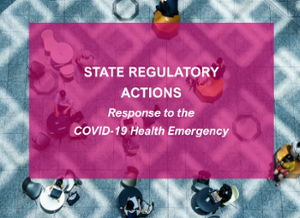Today's Regulatory Mix: US House Communications and Technology Subcommittee Leaders Work to Stop Illegal Robocalls During COVID-19, FCC Releases 4Q 2019 Inflation Adjustment for Cable Operators, FCC to Revise Rules for Program Carriage Disputes, FCC to Update Significantly Viewed TV Station Rules
 US House Communications and Technology Subcommittee Leaders Work to Stop Illegal Robocalls During COVID-19
US House Communications and Technology Subcommittee Leaders Work to Stop Illegal Robocalls During COVID-19
The Communications and Technology Subcommittee Republican Leader Bob Latta (R-OH) and Chair Mike Doyle (D-PN) penned a bipartisan letter urging the Federal Communications Commission and Department of Justice to use the enforcement tools they were given under last year’s congressional effort to stop robocalls.
In December, the president signed the Telephone Robocall Abuse Criminal Enforcement and Deterrence (TRACED) Act into law to give phone companies and the federal government new tools to protect American consumers and hold bad actors accountable.
“Specifically, the TRACED Act directed the Chief of the Enforcement Bureau of the Commission to provide any evidence it obtains suggesting a willful, knowing, and repeated robocall violation with an intent to defraud, cause harm, or wrongfully obtain anything of value, to the Attorney General. While this provision, combined with the increase in civil penalties of up to $10,000 per call on people who intentionally cause a robocall violation, is a strong deterrent, ultimately DOJ must carry out the collection of those penalties. During the COVID-19 pandemic, we urge you to go after these illegal robocallers aggressively and use the new tools Congress has given you to deter and enforce violations of the law effectively,” the leaders wrote.
To read the full letter, click HERE.
 FCC Releases 4Q 2019 Inflation Adjustment for Cable Operators
FCC Releases 4Q 2019 Inflation Adjustment for Cable Operators
The FCC announced the most recent inflation adjustment factors for cable operators. For operators filing quarterly using FCC Form 1240, the 4Q19 inflation factor is 1.28%. Operators calculating the Inflation Factor for a True-Up Period that includes some portion of the 4Q19 should enter the inflation factor on the appropriate lines of Worksheet 1 of FCC Form 1240 as “0.0128.” Operators using this factor for calculating the Projected Period Inflation Segment of FCC Form 1240 should enter this number on Line C3 (January 1996 version), or Line C5 (July 1996 version) as “1.0128.”
 FCC to Revise Rules for Program Carriage Disputes
FCC to Revise Rules for Program Carriage Disputes
At its Open Meeting, the FCC adopted a Notice of Proposed Rulemaking seeking comment on proposed changes to its rules governing the resolution of program carriage disputes between video programming vendors and multichannel video programming distributors – such as cable and satellite operators. The FCC is proposing changes to two procedural provisions: the statute of limitations governing program carriage disputes and the rule governing review of initial decisions of program carriage disputes by an FCC administrative law judge (ALJ). Specifically, it proposed to: (1) clarify that in circumstances where a defendant multichannel video programming distributor has denied or failed to acknowledge a request for program carriage, the statute of limitations is triggered by that action, rather than notice of intent to file a complaint on that basis; and (2) for consistency, similarly revise the statutes of limitations for program access, open video system (OVS), and good-faith retransmission consent complaints; and (3) harmonize the review procedures of ALJ decisions regarding program carriage, program access, and OVS complaints with the Commission’s generally applicable review procedures.
 FCC to Update Significantly Viewed TV Station Rules
FCC to Update Significantly Viewed TV Station Rules
At its Open Meeting yesterday, the FCCC adopted a Notice of Proposed Rulemaking seeking comment on modernizing its procedures for determining whether a television broadcast station is “significantly viewed” in a community outside of its local television market and therefore may be carried in that community by cable systems and satellite operators. This could help cable and satellite TV providers include in their channel lineups out-of-market stations that are significantly viewed by over-the-air TV viewers within their local market. Among other things, the Notice seeks comment on:
- whether the current process for determining a station’s significantly viewed status has become outdated or overly burdensome;
- whether there are commercially available sources that are able to provide the over-the-air viewership data needed to demonstrate a station’s significantly viewed status, particularly for communities in smaller markets;
- what modifications or updates should be made to the current process for establishing whether a station is significantly viewed in a community outside of its local market; and
- whether to update the definitions of “network station” and “independent station” used in making significantly viewed determinations.
___________________________
The Regulatory Mix, Inteserra’s blog of telecom related regulatory activities, is a snapshot of PUC, FCC, legislative, and occasionally court issues that our regulatory monitoring team uncovers each day. Depending on their significance, some items may be the subject of an Inteserra Briefing.





